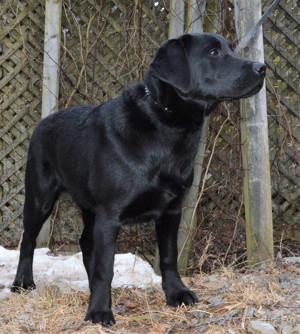CKC Obedience: Introduction
Obedience Trials Rules | francais
Combined Rally and Obedience Rules and Regulations <- Updated!! (Effective January 1, 2015)
(Effective January 1, 2012)
The Canadian Kennel Club has organized obedience trials and award titles for the three main levels of testing. The titles are (CD, CDX & UD) Companion Dog, Companion Dog Excellent and Utility Dog, also known as Novice, Open and Utility. These titles are to be following a dogs name but once a dog earns its "UD" it is entitled to place "OTCH", Obedience Trial Champion, before its name. A dog is entitled to use these titles once it qualifies in three obedience trials and under at least two different judges. The CKC have added other classes before, in the middle and after these three. Pre-Novice (PCN) before Novice, Novice Intermediate (CDI) before Open and Master Obedience Trial Champion (MOTCH) and Grand Master Obedience Trial Champion (GMOTCH) after Utility.
I place great importance in obedience training. It is quite impossible to do anything with your dog or even for your dog to do anything with you unless it is obedient. The basic level of obedience, the CD, is basically a demonstration of sit, stay, come and heeling. Another, often missed, advantage of obedience training and related titles is that it is a statement of a dog's temperament. If a dog shows any signs of aggression toward people or other dogs it is disqualified.
The dogs are judged against a standard where a perfect score would be 200. Each dog must earn at least 170 points and at least 50% on each exercise to qualify. In this respect it is a test. It becomes a trial by announcing the scores and placing the dogs, recognizing "high in class" and "high in trial".
The obedience tests are the same throughout Canada. The judge has little, if any room, to have an easy or a difficult test. The obedience judges are also experienced dog trainers and have trained, handled and qualified dogs to the top level of UD. It is quite difficult to become an obedience judge but most participants find them to be the same, except for personalities. If the dog does the essential part of the exercises they will earn a qualifying score. The variances in scoring come mainly as to degree of an error, such as a crooked sit or a slow recall.
Anyone who trains obedience and then plans to take part in field events should consider some variances to the normal obedience commands, e.g. "over" to an obedience person means jump. To a field person "over" would mean, "over there". A field person would normally train to have the dog deliver a retrieved object to the "heel" position. Obedience rules dictate that the retrieve shall be delivered to the "front" position. Holding your hand high over your head would normally be a signal from an obedience person when he wanted his dog to "down". This same signal would tell the field dog to go straight back.
Obedience Trials
The purpose of obedience trials is to demonstrate the usefulness of the purebred dog as a companion of man, not merely the dog's ability to follow specified routines in the obedience ring. The basic objective of Obedience Trials Defined & Class obedience trials is to produce dogs that have been trained to behave in the home, in public places, and in the presence of other dogs, in a manner that reflects Trials credit on the sport of obedience.
Obedience trials are a sport an all participants should be guided by the principles of good sportsmanship both inside and outside the ring. All contestants in a class are required to perform the same exercises in substantially the same way so that the relative quality of the various performances may be compared and scored.
Obedience Trials Rules | francais
home > CKC Obedience



